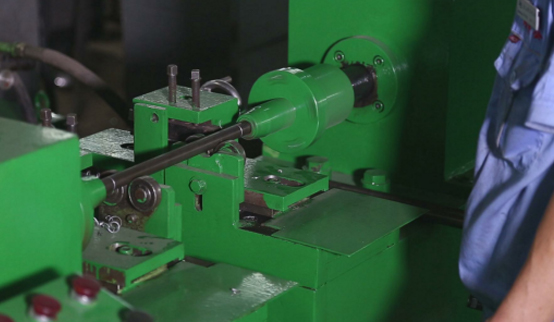 Afrikaans
Afrikaans  Albanian
Albanian  Amharic
Amharic  Arabic
Arabic  Armenian
Armenian  Azerbaijani
Azerbaijani  Basque
Basque  Belarusian
Belarusian  Bengali
Bengali  Bosnian
Bosnian  Bulgarian
Bulgarian  Catalan
Catalan  Cebuano
Cebuano  Corsican
Corsican  Croatian
Croatian  Czech
Czech  Danish
Danish  Dutch
Dutch  English
English  Esperanto
Esperanto  Estonian
Estonian  Finnish
Finnish  French
French  Frisian
Frisian  Galician
Galician  Georgian
Georgian  German
German  Greek
Greek  Gujarati
Gujarati  Haitian Creole
Haitian Creole  hausa
hausa  hawaiian
hawaiian  Hebrew
Hebrew  Hindi
Hindi  Miao
Miao  Hungarian
Hungarian  Icelandic
Icelandic  igbo
igbo  Indonesian
Indonesian  irish
irish  Italian
Italian  Japanese
Japanese  Javanese
Javanese  Kannada
Kannada  kazakh
kazakh  Khmer
Khmer  Rwandese
Rwandese  Korean
Korean  Kurdish
Kurdish  Kyrgyz
Kyrgyz  Lao
Lao  Latin
Latin  Latvian
Latvian  Lithuanian
Lithuanian  Luxembourgish
Luxembourgish  Macedonian
Macedonian  Malgashi
Malgashi  Malay
Malay  Malayalam
Malayalam  Maltese
Maltese  Maori
Maori  Marathi
Marathi  Mongolian
Mongolian  Myanmar
Myanmar  Nepali
Nepali  Norwegian
Norwegian  Norwegian
Norwegian  Occitan
Occitan  Pashto
Pashto  Persian
Persian  Polish
Polish  Portuguese
Portuguese  Punjabi
Punjabi  Romanian
Romanian  Russian
Russian  Samoan
Samoan  Scottish Gaelic
Scottish Gaelic  Serbian
Serbian  Sesotho
Sesotho  Shona
Shona  Sindhi
Sindhi  Sinhala
Sinhala  Slovak
Slovak  Slovenian
Slovenian  Somali
Somali  Spanish
Spanish  Sundanese
Sundanese  Swahili
Swahili  Swedish
Swedish  Tagalog
Tagalog  Tajik
Tajik  Tamil
Tamil  Tatar
Tatar  Telugu
Telugu  Thai
Thai  Turkish
Turkish  Turkmen
Turkmen  Ukrainian
Ukrainian  Urdu
Urdu  Uighur
Uighur  Uzbek
Uzbek  Vietnamese
Vietnamese  Welsh
Welsh  Bantu
Bantu  Yiddish
Yiddish  Yoruba
Yoruba  Zulu
Zulu head pulley tail pulley for belt conveyor
Head Pulley and Tail Pulley for Belt Conveyor Systems
Belt conveyors are integral to modern material handling systems, widely utilized across various industries for transporting goods efficiently. At the heart of these systems are two critical components the head pulley and the tail pulley. Understanding their roles, functionalities, and maintenance requirements is essential for optimizing conveyor performance.
What are Head and Tail Pulleys?
Head pulleys are located at the discharge end of the conveyor, where the material is released from the belt. They serve multiple purposes, including driving the belt and supporting the tension necessary for proper belt function. Tail pulleys, on the other hand, are situated at the loading end of the conveyor. Their primary role is to return the belt to the head for continuous circulation. Together, these pulleys form a closed-loop system that enables the seamless transportation of materials.
Design and Construction
Head and tail pulleys are typically constructed from durable materials such as steel or aluminum, ensuring they withstand the stresses involved in operation. The head pulley often features a lagging surface, which increases traction and prevents slippage while moving materials. This surface may be rubberized or covered with special coatings designed to enhance grip.
Tail pulleys usually have a smoother surface, as they are primarily responsible for guiding the return belt. The dimensions of these pulleys, including diameter and width, depend on the overall design of the conveyor system and the type of materials being transported. The correct sizing is crucial, as it impacts the conveyor's speed, efficiency, and the overall wear and tear on the system.
Maintenance Considerations
head pulley tail pulley for belt conveyor

Proper maintenance of head and tail pulleys is vital for prolonging the life of the conveyor system. Regular inspections should focus on the condition of the pulleys, checking for signs of wear, damage, or misalignment. Common issues may include belt slippage on the head pulley due to wear or improper tension. If the head pulley is not adequately aligned or if the lagging is worn, it can lead to inefficient material movement and increased energy consumption.
On the tail pulley, maintenance involves ensuring that the pulley is clean and free from debris. Accumulation of material can cause excessive wear and potentially damage the conveyor belt. Additionally, tail pulleys should be checked for any signs of rust or corrosion, particularly if the system is exposed to harsh environmental conditions.
Importance of Proper Tensioning
One of the key roles of the head pulley is to maintain the correct tension of the belt. Proper tensioning is crucial for preventing belt sagging and ensuring material is moved effectively without slipping. Under-tensioning can lead to the belt slipping off the pulleys, while over-tensioning may cause premature wear of the belt and other components. Therefore, regular monitoring of tension is a key aspect of conveyor maintenance.
Applications Across Industries
Head and tail pulleys find applications in a wide array of industries, including mining, manufacturing, agriculture, and logistics. In mining operations, they assist in transporting mined materials from one area to another. In manufacturing, they are essential for assembly lines, moving products seamlessly through various stages of production. The logistics sector relies heavily on conveyor systems for transporting packages, making the functionality of head and tail pulleys crucial for efficiency and productivity.
Conclusion
In conclusion, head and tail pulleys are indispensable components of belt conveyor systems. Their design, maintenance, and operational efficiency directly influence the overall performance of material handling processes. By understanding the critical roles these pulleys play, industries can ensure effective transportation solutions, reduce downtime through proper maintenance, and ultimately enhance productivity. Investing in quality pulleys and adhering to a strict maintenance schedule will ensure these systems operate smoothly, supporting the relentless demands of diverse industries.
-
Revolutionizing Conveyor Reliability with Advanced Rubber Lagging PulleysNewsJul.22,2025
-
Powering Precision and Durability with Expert Manufacturers of Conveyor ComponentsNewsJul.22,2025
-
Optimizing Conveyor Systems with Advanced Conveyor AccessoriesNewsJul.22,2025
-
Maximize Conveyor Efficiency with Quality Conveyor Idler PulleysNewsJul.22,2025
-
Future-Proof Your Conveyor System with High-Performance Polyurethane RollerNewsJul.22,2025
-
Driving Efficiency Forward with Quality Idlers and RollersNewsJul.22,2025





























